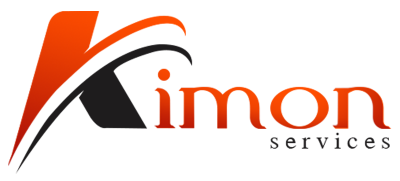In the dynamic realm of business, every company seeks efficient ways to optimise operations, cut costs, and enhance customer experience. One strategy that has emerged at the forefront is Business Process Outsourcing (BPO). As organisations increasingly lean on BPOs to delegate non-core tasks, understanding the intricacies of their pricing models becomes paramount. Selecting the appropriate pricing strategy can make the difference between achieving cost efficiencies and facing unexpected financial burdens.
BPO pricing models aren’t a one-size-fits-all. Just as businesses differ in their goals and operational requirements, BPOs offer a variety of pricing structures tailored to these unique needs. From fixed-cost models to transaction-based structures, each has its merits and potential pitfalls. The challenge lies not just in understanding them but in pinpointing which aligns best with a company’s objectives.
This introduction aims to set the stage for a comprehensive exploration into the world of BPO pricing. Whether you’re a startup looking for ways to manage your budding operations or an established enterprise aiming to streamline processes, it’s essential to equip yourself with the knowledge to make informed decisions. Selecting the right BPO pricing model involves understanding one’s business needs, being aware of global trends, and aligning the contract to ensure both value and efficiency. With a plethora of choices, from fixed-fee outsourcing to value-based pricing, the path to effective outsourcing has never been more nuanced and accessible. Dive in to discover the intricacies of each model and ascertain which one could be the key to unlocking your business’s potential.
BPO Pricing Models: A Comprehensive Overview
Navigating through the intricate maze of BPO pricing models requires a keen understanding of the many factors influencing them. At the core, four main elements come into play: geography (onshore vs. offshore rates), scale of operations, the complexity of tasks, and the specific requirements of the client. The global landscape of BPO has seen a diversification in pricing models tailored to cater to these factors, ensuring businesses find a fitting cost structure for their outsourcing needs.
Factors Influencing BPO Pricing
- Onshore Rates: Typically higher due to local market conditions, regulations, and competition.
- Offshore Rates: Often advantageous for businesses, as offshore BPO rates can be competitive. Countries like India and the Philippines, for instance, offer quality services at a fraction of the cost.
- Scale and Complexity: As the businesses evolve in scale and complexity larger, multifaceted operations might lean towards flexible, scalable pricing models, such as multi-tiered pricing BPO or the FTE pricing model.
- Specific Client Requirements: Depending on the service, transaction-based BPO pricing or hourly rate BPO might be most suitable. Performance-based BPO pricing can be ideal for tasks where measurable results drive success.
Breakdown of BPO Pricing Models
- Hourly Rate: Charges are based on the time a service takes. Common in ITO pricing strategies.
- Transaction: Centers around the number of transactions processed. Understanding how transaction-based BPO pricing works is crucial for businesses with variable transaction volumes.
- Performance-Based: Tied to specific performance metrics. Companies often choose performance-based BPO pricing when outcomes are easily measurable.
- Fixed Fee: Favoured for its predictability. Advantages of fixed fee BPO pricing include clear budgeting without unexpected costs.
- Shared Risk/Reward: Both the BPO provider and client share the risks and rewards. This shared risk/reward BPO model builds a partnership based on mutual benefits.
- Multi-Tiered: Combines various pricing models. Ideal for diverse operations and scalable requirements.
| Pricing Model | Ideal For | Common in |
| Hourly Rate | Tasks with predictable time frames | ITO |
| Transaction-based | Varying transaction volumes | BPO |
| Performance-Based | Measurable results | BPO/KPO |
| Fixed Fee | Set tasks, predictable operations | BPO/ITO |
| Shared Risk/Reward | Partnerships and long-term contracts | BPO/KPO |
| Multi-Tiered | Diverse operations | BPO/ITO/KPO |
For startups specifically, understanding BPO pricing models is imperative. As they scale, their needs change, and having a flexible yet cost-effective BPO partner can be the difference between growth and stagnation. Therefore, BPO pricing models for startups should be selected with future scalability in mind.
On the other hand, businesses seeking specialised knowledge processes might delve into KPO pricing models. The difference between KPO and BPO pricing often lies in the expertise and niche-specific knowledge required. Similarly, those focused on IT may look into ITO pricing strategies, distinct in their own right.
BPO contracts, like any business agreement, are open to negotiation. Ways to negotiate BPO costs include understanding industry benchmarks, being aware of global outsourcing rates, and leveraging transparent pricing for a win-win scenario. Tools like a BPO pricing calculator can aid in this journey, as can insights from top BPO companies by pricing.
BPO Pricing for Startups and SMEs
Startups and SMEs face unique challenges, often juggling resource constraints with the urgency to scale. Outsourcing, particularly through BPOs, emerges as a compelling solution. However, understanding BPO pricing models tailored specifically for startups is crucial for making informed decisions.
Key BPO Pricing Models Tailored for Startups
- Hourly Rate BPO: Often suitable for startups with unpredictable task volumes. However, the key is to monitor these hourly rate BPO operations closely to ensure cost-effectiveness.
- Transaction-Based Pricing: Ideal for startups with a varying number of transactions. This model, often referred to as transaction-based BPO pricing, is directly proportional to the volume of work.
- Fixed Fee Outsourcing: A predictable model where startups pay a set fee. The advantages of fixed-fee BPO pricing lie in its transparent cost structure.
- Performance-Based BPO Pricing: Tied to specific outputs or results. Startups can opt for performance-based BPO pricing when specific, measurable results are the focus.
- Shared Risk/Reward BPO Model: Both the client and BPO share profits or losses. This model establishes a symbiotic relationship, ideal for long-term partnerships.
- Multi-Tiered Pricing BPO: Combines various pricing structures, offering flexibility. Startups can leverage the multi-tiered pricing BPO model as they scale, transitioning between different structures.
Navigating BPO Costs for Startups
Interestingly, BPO can offer insights into generational business evolution. Similarly, BPO industry benchmarks help startups navigate the outsourcing landscape, understanding how it has evolved and where it stands. Offshore BPO rates, for instance, can offer cost advantages, but comparing onshore vs. offshore BPO rates ensures a balance between cost and quality.
Moreover, startups should be familiar with the differences between KPO and BPO pricing, ensuring they’re paying for the exact expertise they need. KPO pricing models, often higher, are reserved for tasks requiring deep expertise, whereas general tasks can be efficiently managed under standard BPO pricing models.
BPO contractual terms play a pivotal role in shaping the cost structure. By using tools like a BPO pricing calculator and referencing BPO contract templates, startups can gain a clearer perspective on potential costs. But it’s not just about understanding the costs – negotiation is key. BPO cost negotiation can lead to better terms, ensuring value for both parties.
Factors Influencing BPO Pricing for Startups
- Global Outsourcing Rates: The global nature of outsourcing means prices fluctuate based on geography and local market conditions.
- Contract Terms: The specifics of the BPO contract, be it in terms of duration, service level agreements (SLAs), or other specifics, can influence pricing.
- Nature of Task: Whether it’s general BPO, KPO, or ITO, the nature of the task significantly impacts the pricing.
- Negotiation: Effective BPO cost negotiation can result in a win-win for both startups and the BPO provider.
| Factor | Influence on Pricing |
| Global Rates | Varies based on region. |
| Contract Terms | Longer terms may offer better rates. |
| Nature of Task | Specialised tasks (KPO) often command higher prices than general tasks. |
| Negotiation | Effective negotiation can lead to cost savings and better terms. |
As startups embark on their BPO journey, understanding, comparing, and leveraging the right pricing model is paramount. With myriad factors at play, from global outsourcing rates to contract specifics, navigating the BPO pricing maze requires knowledge, strategy, and negotiation skills.
KPO vs. BPO: Decoding the Pricing Difference
In the expansive realm of outsourcing, two models emerge as prevalent choices for businesses: BPO (Business Process Outsourcing) and KPO (Knowledge Process Outsourcing). Both serve distinct purposes, and their pricing structures reflect these differences. Let’s delve into the intricate world of KPO and BPO pricing models to understand where the distinction lies.
Understanding the KPO Model
KPO, or Knowledge Process Outsourcing, entails tasks that require specialised knowledge and expertise. Examples include financial consultancy, research and development, and data analytics. Given the specialised nature of tasks, KPO pricing models often factor in the high level of expertise required.
Key Differences between KPO and BPO
- Nature of Task: BPO typically involves general tasks such as customer support, data entry, and human resources. In contrast, KPO caters to niche sectors demanding specialised knowledge.
- Expertise Level: KPO requires professionals with deep domain knowledge. This specialised expertise is a primary driver in the difference between KPO and BPO pricing.
- Pricing Structures: BPO pricing models often revolve around transaction-based pricing, hourly rate BPO, and fixed fee outsourcing. On the other hand, KPO pricing models reflect value-based pricing due to the high-end knowledge-based services provided.
Interestingly, just as the generational shifts, the evolution of outsourcing from BPO to KPO highlights the increasing value of specialised knowledge in our global economy.
Ramifications on Pricing
KPO’s niche expertise often translates to higher pricing compared to BPO. Why? The skills and knowledge inherent in KPO tasks are less ubiquitous, making them more valued. When businesses consider factors influencing BPO pricing, it’s often about volume, offshore BPO rates, and the nature of the task. KPO, in contrast, places a premium on expertise, experience, and the value brought to the business.
| Outsourcing Model | Primary Pricing Factors |
| BPO | Transaction volume, nature of task, global rates |
| KPO | Expertise, specialisation, and value-added to the business |
For businesses weighing their options, understanding the KPO pricing difference is crucial. As an example, a startup might initially lean towards BPO pricing models for startups due to budget constraints but might later invest in KPO for specialised tasks as it scales.
Navigating Pricing Models and Strategies
A variety of strategies exist for both BPO and KPO. Performance-based BPO pricing, fixed fee outsourcing, and shared risk/reward BPO models are among the popular choices in BPO. Conversely, KPO pricing models might involve hybrid strategies or cost-plus pricing based on the value delivered.
For a more granular breakdown, businesses can reference tools like a BPO pricing calculator or delve into differences between KPO and BPO pricing. Renegotiating BPO contracts or KPO agreements can also yield more favourable terms, emphasising the importance of negotiation in the process.
Global Implications on Pricing
The global nature of outsourcing means regional factors play a role. Offshore BPO rates might differ significantly from onshore rates. Similarly, KPO services offered in tech hubs might come at a premium. Businesses must compare onshore vs. offshore BPO rates, as well as KPO rates, to discern the most cost-effective solution.
While BPO and KPO both fall under the outsourcing umbrella, they cater to different needs and come with distinct pricing nuances. Recognizing these differences enables businesses to allocate resources more effectively and harness the power of outsourcing to its fullest potential.
Which Pricing Model to Adopt?
Long-term partnerships, much like the enduring legacy reflected by the underscore the essence of sustainability and trust. Within the domain of Business Process Outsourcing (BPO), establishing such relationships becomes pivotal. Yet, a significant challenge faced by entities is selecting the best BPO pricing strategy for these enduring alliances.
Sustainability and Trust in Prolonged Relationships
Sustainability and trust are paramount in fostering extended partnerships. These principles ensure that both parties understand and respect each other’s goals, working collaboratively to achieve mutual benefits. The foundation of such collaborations often hinges on the contract’s intricacies and BPO cost structures, emphasising a transparent and fair pricing model.
Examining BPO Pricing Models
Several BPO pricing models cater to different needs:
- Transaction-based Pricing: Aligns costs with the volume of transactions, ensuring that businesses only pay for what they utilise.
- Hourly Rate BPO: Charges are based on the hours of service rendered.
- Fixed Fee Outsourcing: A single, predetermined amount covers services, offering predictability in expenses.
- Performance-based BPO Pricing: Costs are tied to performance metrics, incentivizing quality and efficiency.
- Shared Risk/Reward BPO Model: Both parties bear potential risks and rewards, fostering a collaborative environment.
- Multi-tiered Pricing BPO: Integrates multiple pricing strategies based on different service tiers or stages.
For lasting alliances, the best BPO pricing strategy for long-term partnerships often gravitates towards transparent models like fixed fee outsourcing or shared risk/reward approaches. These models predicate on mutual trust and aligned objectives.
Factors to Consider in Choosing a Pricing Model
- Nature of Services: Whether it’s general tasks like data entry (BPO) or specialised roles like financial consultancy (KPO) can guide the pricing model choice.
- Global Implications: Comparing onshore vs. offshore BPO rates becomes pivotal, especially in a globalised business environment.
- Volume vs. Value: Some services might be volume-centric, requiring transaction-based pricing, while others, like KPO, demand value-based pricing due to their specialised nature.
- Negotiation Leeway: Ways to negotiate BPO costs can open doors for bespoke arrangements, tailored to individual partnership dynamics.
Benefits of Transparent BPO Pricing
Transparent pricing nurtures trust. Benefits include:
- Predictable budgeting, aiding financial planning.
- Reduced disputes over costs and deliverables.
- Enhanced trust and strengthened partnership bonds.
Global Trends in BPO Pricing
A surge in hybrid BPO pricing reflects the industry’s move towards flexible models that accommodate varying client needs. BPO industry benchmarks also indicate a tilt towards performance-based strategies, especially in competitive sectors where quality can’t be compromised.
For a nuanced understanding, businesses often resort to tools like BPO pricing calculators or delve into differences between KPO and BPO pricing. Drafting or amending contracts? BPO contract templates can serve as valuable starting points.
Choosing the optimal BPO pricing model is an investment in the future. By emphasising transparency, flexibility, and mutual trust, businesses can lay the foundation for enduring, beneficial partnerships. As the outsourcing landscape evolves, staying abreast of trends and prioritising shared objectives will ensure that partnerships stand the test of time.
Negotiating and Optimising BPO Costs
As businesses seek to streamline processes and minimise overheads, understanding and optimising Business Process Outsourcing (BPO) costs remains pivotal. Like the significance of knowing the appreciating one’s lineage, grasping BPO pricing models aids in ensuring cost-efficiency in business operations. This journey, however, requires robust negotiation tactics and a strong emphasis on transparency.
Strategies and Tactics for Effective Negotiation
- Research and Benchmarks: Start by analysing BPO industry benchmarks. Understanding where your proposed costs sit concerning the industry can give you a negotiating edge.
- Understand BPO Cost Structures: Grasp the nuances of transaction-based pricing, hourly rate BPO, fixed fee outsourcing, and performance-based BPO pricing. This knowledge will aid in identifying which models align with your business needs.
- Consider Global Outsourcing Rates: Comparing onshore vs. offshore BPO rates can offer insights into where best to outsource, keeping quality and costs in balance.
- Future-proofing: Negotiate with scalability in mind. Scalable pricing models can adapt to your business’s growth, ensuring you’re not renegotiating constantly.
- Contract Clauses: Dive deep into BPO contractual terms. Look for areas such as exit clauses, penalty clauses, and service-level agreements that might be up for negotiation.
The Role of Transparency in BPO Agreements
Transparency in BPO agreements is synonymous with mutual trust. A few key aspects to prioritise include:
- Transparent Pricing: Emphasise clarity in cost structures, whether it’s a cost-per-agent BPO, FTE pricing model, or a shared risk/reward BPO model. Clear delineations prevent future conflicts.
- Value Proposition: Opt for value-based pricing in scenarios where BPO’s contribution directly impacts business outcomes. This ensures you’re paying for results, not just services.
- Clear Communication Channels: Establish communication mechanisms that allow for regular updates, reviews, and feedback, ensuring alignment in expectations and delivery.
- Offshore vs. Onshore Clarity: With global outsourcing, understand the implications of offshore BPO rates versus onshore. Cost differences should be clear, considering factors like time zones, cultural nuances, and local regulations.
- Transparent Contract Templates: Utilising BPO contract templates can be beneficial. However, ensure that any template used is modified to reflect the unique aspects of your agreement.
BPO Pricing Models in Detail
To further assist businesses, here’s a breakdown of prominent BPO pricing models:
| Pricing Model | Description | Best Suited For |
| Transaction-based | Costs aligned with volume | High-volume, repetitive tasks |
| Hourly Rate | Charges based on hours worked | Projects with variable workloads |
| Fixed Fee | Predetermined amount for services | Predictable, consistent services |
| Performance-based | Tied to performance metrics | Quality-centric tasks |
For those seeking a deeper dive into BPO cost negotiation, tools such as BPO pricing calculators offer insights into potential expenses. Differences between KPO and BPO pricing can provide context for those considering specialised outsourcing. For startups, understanding BPO pricing models for startups is invaluable in ensuring cost optimization from the get-go.
Remember, effective negotiation isn’t about paying the least but ensuring value. By emphasising transparency and utilising effective negotiation strategies, businesses can ensure their BPO engagements are cost-effective and fruitful.
Conclusion
In the vast landscape of Business Process Outsourcing (BPO), selecting the ideal pricing model can be the linchpin of a successful partnership. Your choice has direct implications not just for your bottom line, but also for the efficiency, scalability, and quality of services you receive. While there’s no one-size-fits-all answer, aligning your business goals with the right BPO model is crucial. Whether you prioritise flexibility, predictability, or performance, there’s a model tailored to meet those needs. As businesses evolve, so might the suitability of a particular pricing strategy.
It’s vital to periodically revisit and reassess the fit of your chosen model in light of changing business objectives. Ultimately, understanding BPO pricing models is less about costs and more about value – ensuring you receive the best service for your investment. As you move forward, let this guide serve as a compass, pointing you towards informed and strategic decisions in the world of outsourcing.
FAQs
What is a BPO pricing model?
A BPO pricing model refers to the structure or methodology by which Business Process Outsourcing (BPO) services are priced. These models determine how a client is charged for the outsourced services they use, and they can vary based on volume, performance, or the specific nature of the service among other factors.
How are BPO services priced?
BPO services are typically priced based on various structures including hourly rates, per-transaction fees, performance-based rates, and fixed monthly/annual fees. The chosen pricing structure often depends on the specific service, client preferences, and the level of complexity involved.
What are the different types of BPO pricing structures?
The main types of BPO pricing structures include hourly rate pricing, transaction-based pricing, performance-based pricing, and fixed fee pricing. Each structure is designed to meet different client needs and business scenarios.
How do I choose the right BPO pricing model for my business?
Choosing the right BPO pricing model for your business requires analysing your specific needs, volume of work, predictability of tasks, desired level of control, and budget constraints. It’s essential to align the pricing model with your business objectives and ensure there’s transparency and clarity in the pricing terms.
What’s the difference between KPO and BPO pricing?
KPO (Knowledge Process Outsourcing) typically involves more specialised, analytical, and knowledge-based tasks, while BPO covers more general business processes. Due to the higher expertise and specialisation required in KPO, its pricing can often be higher than BPO pricing.
How does offshore BPO pricing compare to onshore?
Offshore BPO pricing is generally lower than onshore pricing due to differences in labour costs, operational expenses, and economic conditions. However, while offshore BPO may offer cost savings, onshore BPO might provide benefits like cultural alignment and easier communication.
Are there hidden costs in BPO contracts?
BPO contracts can sometimes have hidden costs such as charges for additional training, technology upgrades, or overtime fees. It’s essential to read contracts carefully, understand all terms, and seek clarity on any ambiguous charges.
Can BPO pricing models be negotiated?
Yes, BPO pricing models can often be negotiated. Factors like the volume of work, the length of the contract, and the strategic importance of the partnership can influence negotiations.
What is the average hourly rate for BPO services?
The average hourly rate for BPO services can vary widely depending on the type of service, location, complexity, and the provider’s expertise. As of my last update in 2022, rates could range from $5 to $50 or more per hour.
How does transaction-based pricing work in BPO?
Transaction-based pricing in BPO means clients are charged per transaction, such as each processed order, resolved customer complaint, or processed invoice. This model offers scalability as costs align with the actual volume of work done.
Why might a performance-based BPO model be beneficial?
A performance-based BPO model can be beneficial because it aligns the service provider’s incentives with the client’s desired outcomes. Providers are rewarded based on achieving specific performance metrics, ensuring they focus on delivering quality results.






